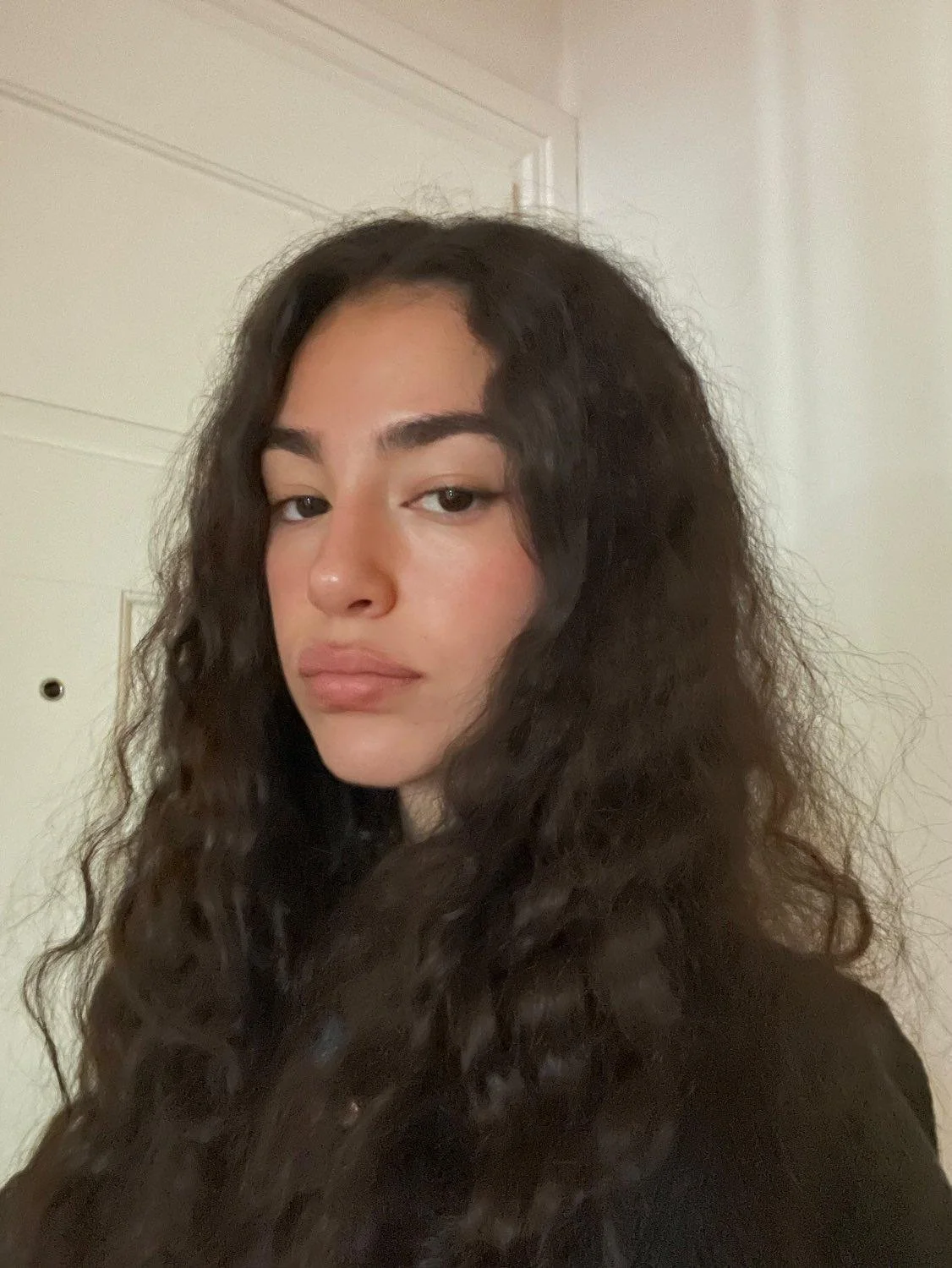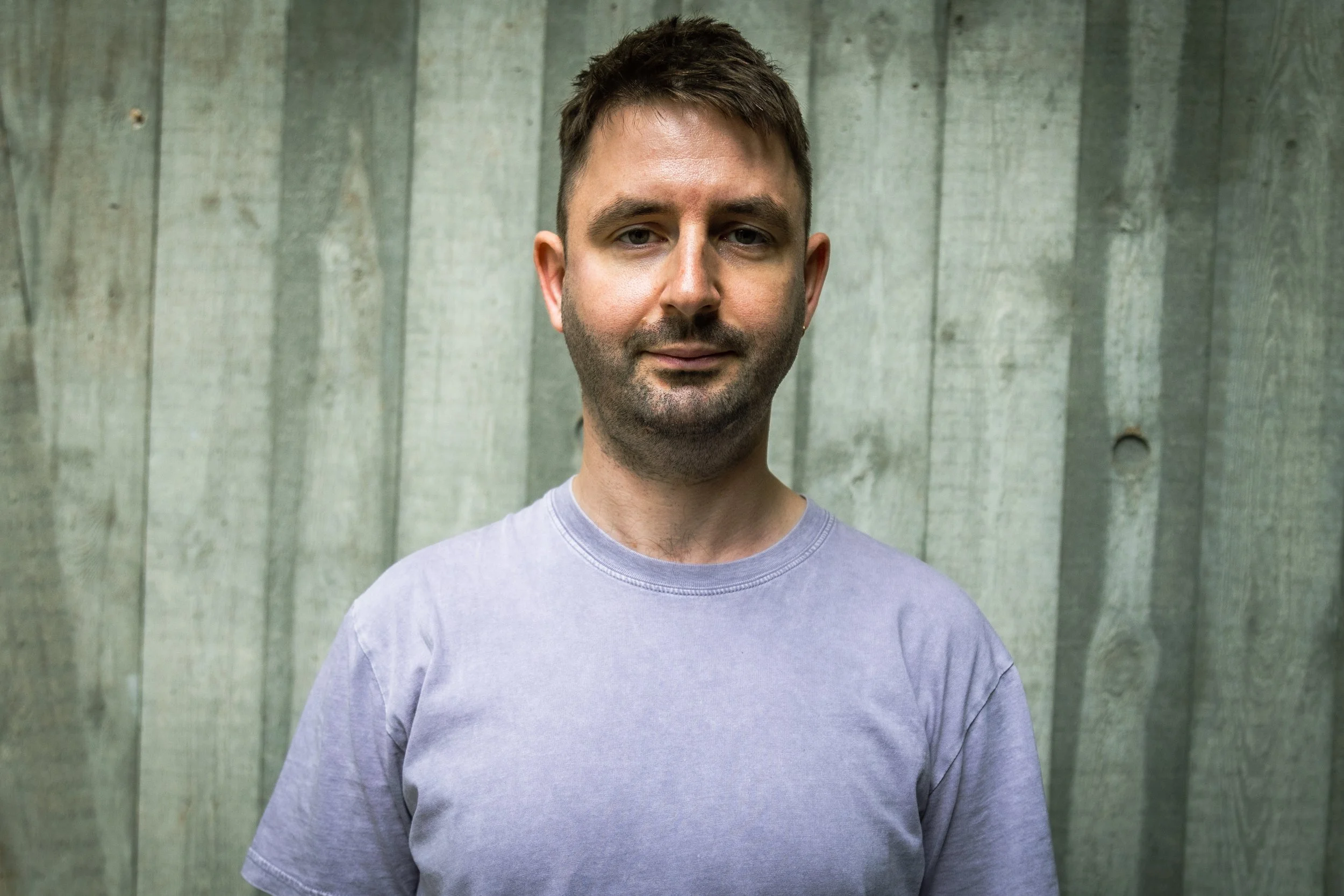In conversation with Nicole Schoeni
“What I really love to do is to support artists and to be a patron and to share stories.”
- Nicole Schoeni
Image: Nicole Schoeni. Schoeni Projects
Nicole is an experienced gallerist and gallery director, and the founder of Schoeni Projects. She has lived in Hong Kong for most of her life, although attended school and university in the UK. Contemporary and street art are two of her passions, although what she really loves the most about the art world is collaborating with creatives and meeting new people.
disCONNECT was the inaugural exhibition at Schoeni Projects’ London space, a Victorian townhouse in South West London. The exhibition transformed the building with site-specific works from 10 urban artists working from seven different countries. It was put together and shown throughout the coronavirus pandemic, which made the installation of the art extremely challenging – but arguably, even more rewarding. Although you can no longer go to see disCONNECT in London, there is a virtual tour of the London show available online! Or, if you happen to be in Hong Kong then you can check out the second show there.
Can you tell me a bit more about your job?
I am the Founder of Schoeni Projects, but I also give myself the title of ‘Patron of the Arts’, meaning I support projects through helping give a platform to artists to engage with a wider audience. I really don’t like putting myself in a box, I want to adapt and evolve, so the title of founder covers a lot of ground.
In a previous life, I was a gallerist and director of a gallery. The gallery I ran was based in Hong Kong, but recently myself and my husband have decided to move back to London. My husband is English but has lived in Hong Kong for 17 years. And although I’ve travelled and gone to boarding school and university in the UK, I have always been based in Hong Kong, so I think there is going to be a big culture shock. We have two small kids and we’re looking forward to change and a new chapter in my life! I’m also seeing it as an opportunity to get into art again…
How did you find yourself running a gallery?
My father opened up a gallery in Hong Kong in the early 1990s, and he is really considered to be one of the pioneers of Chinese contemporary art. Back then, Chinese art was very much underground and didn’t have very much exposure, either domestically or internationally. He took a big risk by opening this gallery in the 90s and basically gave artists a platform to exhibit outside of China.
My parents were great in the sense that they never really pushed me, but it was always on the cards for me to work at the gallery. My dad was Swiss and although he worked in China, he never actually spoke Mandarin, so he always encouraged me to learn the language. I went on to study Chinese and Economics for my degree at SOAS.
When I was 23, my dad passed away really suddenly. I was at university and with his passing I just threw myself into the business and I ran the gallery in Hong Kong. I specialised mostly in Chinese contemporary art but also explored other styles, like urban art for example. It was a really steep learning curve, luckily, I had always loved art and I had worked in the gallery in the years previous.
After 10 years, I decided to take a hiatus. Quite honestly, I think I was burned out, I’m a bit of a workaholic and it was really intense. We had something like 16 programmes a year, we had three locations, and I was managing eight staff. After 10 years I needed a break, and I really needed to reprioritise my life. I also came to realise that the gallery model doesn’t suit me anymore, and if I’m honest I don’t know if it really works at all generally.
Image: Nick Smith, Artist: Mr Cenz, installation view of disCONNECT, Schoeni Projects London (2020)
What is it about the traditional gallery model that you don’t like?
I guess it comes down to balance in my personal life. As I’ve said, I’m a workaholic. With running an art gallery, there are certain expectations about having a certain number of programmes, taking part in art fairs etc. When I was running the gallery, towards the end of it all, I realised I was doing a lot of things without really thinking about them. Just working on a kind of autopilot function.
There is also a lot of commercial pressure that comes along with running a gallery. I’m in a very lucky position where the commercial side doesn’t have to be my main concern. What I really love to do is to support artists and to be a patron and to share stories. I love meeting artists and collaborating with people – really, I love sharing the love of art.
There is this misconception of the art industry, that it’s a really glamorous lifestyle. It’s really not that glamorous, I’ll put it that way. Whilst I was running the gallery in Hong Kong, I realised that art should be for everyone. It’s not just about buying and selling, it should be about inspiring and creating a conversation. I felt like a lot of people who loved art were intimidated to go to gallery spaces and that’s also why I want to work with more unique spaces than so-called “white cubes”. I want to create more inviting settings to enjoy art in, so for example disCONNECT in London was in a domestic setting which is so much more accessible.
There were so many great things about running a gallery, but I guess I’ve sort of taken all the points that I really loved about it and am using those in Schoeni Projects. You have to evolve and adapt.
What are you working on now?
We discovered this house – in London – and I thought it would really be such a missed opportunity not to make use of it with art projects. That’s where Schoeni Projects was born. It embodies the direction that I want to take moving forward. I love collaborating with people.
At the moment, we are actually planning to bring disCONNECT to Hong Kong, which will also be under Schoeni Projects. It will be held in a unique space, you could call it a historic tenement building in Hong Kong that was built in the 1950s. I quite like the idea of going from a heritage house in London to a house that has history in Hong Kong as well.
Art captures history and it’s capturing this moment of the pandemic. Trying to give people hope and inspire. Schoeni Projects is that platform where I am trying to give back to the community.
Will the exact same pieces be shown in Hong Kong, or will there be anything different?
Whatever is removable we are bringing with us, but obviously there were a lot of murals and installations in the house itself which we can’t physically bring. We are also including four Hong Kong artists to be a part of the conversation. I am really interested in cross-cultural dialogue. These four new artists have been asked to respond to the pandemic as well as the London show.
Hong Kong is my home, so it was really important for me to bring this project here and also to have that conversation about art during the pandemic.
What has your work-life balance been like throughout disCONNECT so far?
disCONNECT has consumed my whole year. I have to admit that I haven’t had a very healthy balance this year, partly because I don’t have such a big team anymore. I have a lot more responsibility – most of which I put on myself.
Artist liaison, social media, logistics, everything that came with the show I basically planned out myself and worked on remotely, gratefully with the support of my partners for this project HKwalls. The time difference is huge – Hong Kong is seven hours ahead of London – which did mean a lot of late nights. But ultimately it was a great experience, especially having seen what we managed to achieve.
Image: Ian Cox, Artist: Herakut, installation view of disCONNECT, Schoeni Projects London (2020)
As someone who went to see DisCONNECT, it was honestly so great to be able to see art in person again and feel inspired, despite how bleak everything felt because of the pandemic.
That’s really, really nice to hear because like everybody, I had so many doubts and concerns about going ahead with the project. It was originally supposed to open in April, but we kept delaying and delaying, and eventually I had enough and decided to go ahead. I tend to be quite strong headed and I like challenges. I knew that for the artists for example, a lot of their plans were cancelled because of coronavirus. And so, to give them a project and a sense of hope – basically I didn’t want COVID to knock us down.
One of the artists who was based in Brazil, which was in lockdown at the time, and was sent some of the blinds from the house to use as his canvas. He painted “the show must go on” on one of them, which as cliché as it is was actually taken from an email that I sent to all of the artists when I had finally decided to go ahead. I really loved how he took that comment and made it a part of the exhibition.
What skills and qualities do you look for in someone, particularly a young person, if you are hiring?
Obviously, a love of art is important. But you also have to have a willingness to learn. A good work ethic is very important too. It’s not an easy path though, a lot of it is also about getting on with people, being creative and thinking outside of the box.
I believe in experience over education if I’m honest. You learn a lot more like that. A university degree isn’t so important to me. It could be experience in lots of other fields, not just art, as I believe a lot of experience is transferable.
You’ve mentioned how important networking is, so how hard is it really to break into the industry if you don’t know anyone?
It’s all about networking and meeting people through your network. But that isn’t to say that if you are new you can’t break in.
You need to really put yourself out there. Go to galleries, go to exhibitions, start conversations with gallerists or people in the art world. You definitely can’t be shy. You need to have the confidence to spark up conversations with people that you don’t know and that’s part of what I love about the art world, it’s meeting new and interesting people, and finding inspiration everywhere.
Confidence is key. And that’s definitely something I learnt at the age of 23: even if you don’t have confidence just act like you do! I was really green when I started, I was quite a spoilt, only child and the only experience I had was in the gallery or being a student. Filling the shoes of a 58-year-old man who was well-known and well-respected in the art industry, it wasn’t easy, and I just had to find that confidence in myself.
Interview by Mollie Kate Cohen
















